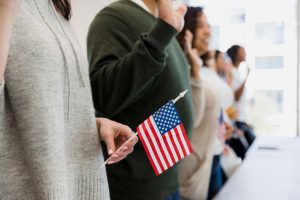There are two non-immigrant categories for foreign nationals wishing to study in the US namely, the F visa and the M visa. The F visa is for for non-immigrants who wish to pursue academic studies and/or language training programs, whereas the M visa is for non-immigrants who want to pursue non academic or vocational studies.
A student visa is a non-immigrant visa as it is issued to foreign nationals who do not intend to stay in the US permanently. While applying for a student visa, the foreign national student assures that he/she only wish to remain in the US for as long as it takes to complete their studies. Remember that a non-immigrant visa cannot be used as an option to enter the US and go for permanent residence.
The US Department of State is responsible for issuing a student visa and their policy is carried out around the world by US consulates and embassies. Students applying for student visas abroad have to deal with a US consulate or embassy in their home country. The USCIS is the government agency that has jurisdiction over individuals who apply to change status to student while being in the US.
Features of the F-1, Academic Student Visa
Students are allowed to come to the US as full- time academic or language students enrolled in a program that will result in a degree or certificate. They cannot get a F visa to study at a public elementary school or a publicly funded adult education program. They cannot get a F visa to study at a public secondary school unless they prepay the full cost of such program (for a maximum of one year).
Related Article: Complete Guide on F1 Visa
Students are permitted to transfer from one school to another or switch academic programs by notifing the USCIS through a simple procedure. They can also work legally in a part- time job on campus. In addition to these, they can get special permission to work off campus if they can prove it is economically urgent or if that particular job will provide practical training for their field of study.
After a minimum of 12 months of Optional Practical Training after the end of their course study, students can work. Students having a degree in science, technology, engineering, or mathematics may qualify for as much as 29 months of employment authorization. There are visas for accompanying relatives, but relatives cannot work in the US.
Features of the M-1, Vocational Student Visa
M-1 visa holders can come to the US as a full-time vocational or non academic student enrolled in a program that would result in a degree or certificate. They can transfer from one school to another, but they have to receive permission from USCIS to do so. Once students are six months into the program of studies, they are not allowed to transfer except under truly exceptional circumstances. They cannot change their course of study, neither can they work during their studies. Once their studies are over, they can get permission to work for up to six months. The job must be considered practical training for their field of study. There are visas available for accompanying relatives, and like the F-1 visa category, they cannot work in the US.




